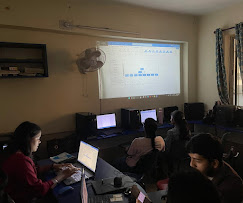Top Career Paths in Artificial Intelligence and Data Science
Top Career Paths in Artificial Intelligence and Data ScienceBy Emancipation Edutech Pvt. Ltd. – The Best IT Training Center in Ranchi In today’s technology-driven world, Artificial Intelligence (AI) and Data Science have become two of the most powerful forces shaping the global economy. From self-driving cars to intelligent chatbots, personalized shopping to predictive healthcare — these technologies are transforming industries at a pace never seen before. As businesses increasingly rely on data and automation, the demand for professionals skilled in AI and data science has skyrocketed, creating incredible career opportunities for students and working professionals alike. If you’re in Ranchi and looking to build a career in this exciting domain, Emancipation Edutech Pvt. Ltd., the best IT training center in Ranchi, offers the perfect platform to learn, upskill, and launch your career with confidence. 1. The Rise of AI and Data Science in India India is fast emerging as a global hub for artificial intelligence and data-driven innovation. According to NASSCOM, the AI and data analytics market in India is expected to reach 500 billion to India’s GDP. Students who develop technical expertise and practical experience today will become the leaders of tomorrow in this digital revolution. 6. Conclusion Artificial Intelligence and Data Science are not just trends — they are the future of work. These technologies are reshaping industries and creating endless opportunities for innovation. For students in Ranchi, Emancipation Edutech Pvt. Ltd. provides the perfect platform to learn, experiment, and excel in these futuristic domains. With expert guidance, project-based learning, and placement-focused programs, Emancipation ensures that every learner is ready to take on the challenges of the AI-driven world. Start your journey today with Emancipation Edutech Pvt. Ltd., Ranchi — the best IT training center for AI, Data Science, and Machine Learning — and unlock a world of opportunities in technology and innovation. Emancipation Edutech Pvt. Ltd.Best IT Training Center in Ranchi | Specializing in Data Science, AI, Python, and Machine LearningLocation: Plaza Chowk, RanchiEmpowering Students with Practical Skills and Industry-Ready Knowledge.
Top Career Paths in Artificial Intelligence and Data Science Read More »









